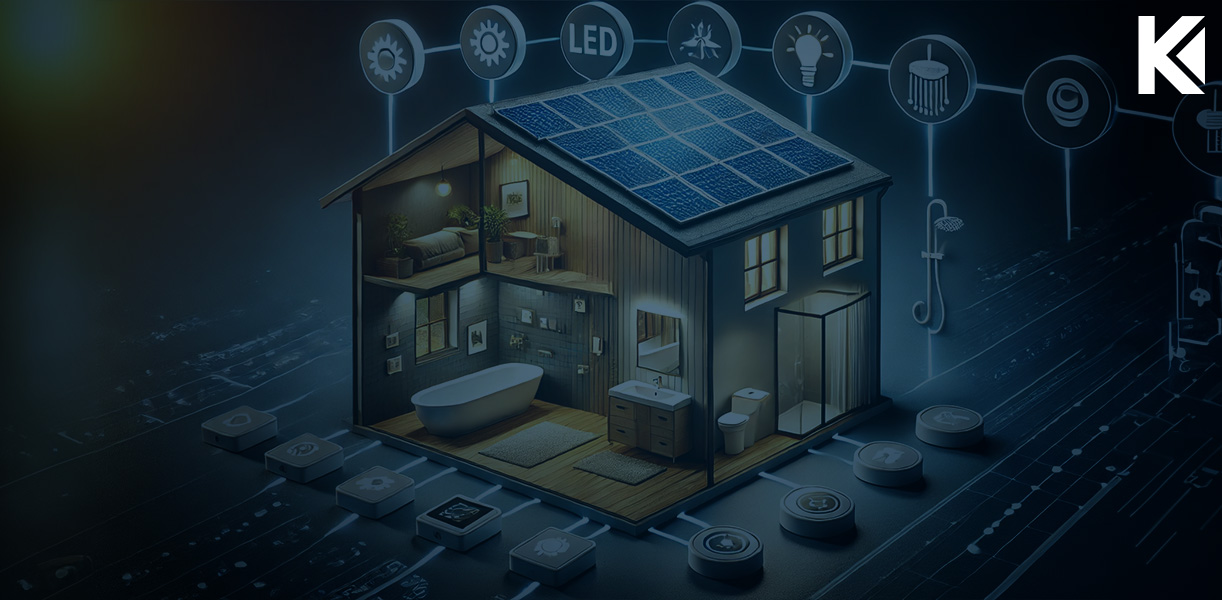With rising energy and water costs, homeowners are more focused than ever on making their homes efficient. By adopting energy-saving practices, you can lower your utility bills, reduce your carbon footprint, and conserve valuable natural resources. Below are practical steps you can take to make your home more energy- and water-efficient, all while contributing to a sustainable future.
1. Upgrade to Energy-Efficient Appliances
One of the most effective ways to lower energy consumption is by switching to energy-efficient appliances.
- Energy Star-rated appliances: Appliances like refrigerators, dishwashers, and washing machines with the Energy Star label are designed to use significantly less energy, helping you save money over time.
- Smart thermostats: Installing a smart thermostat can optimize your heating and cooling schedules, saving you 10-15% on your energy bills annually. The thermostat adjusts to your preferences, making it a convenient and cost-effective option.
2. Seal Your Windows and Doors
Drafty windows and doors can lead to significant energy loss, causing your HVAC system to work harder to maintain a comfortable temperature.
- Weatherstripping and caulking: Sealing gaps around windows and doors can prevent drafts, keeping your home properly insulated during hot summers and cold winters.
- Double-glazed windows: Consider upgrading to double-glazed windows, which offer better insulation and reduce the transfer of heat, keeping your home comfortable and energy-efficient year-round.
3. Switch to LED Lighting
Lighting contributes a large portion of your energy consumption. Switching to LED bulbs can reduce this dramatically.
- LED bulbs: These bulbs use up to 75% less energy and last up to 25 times longer than traditional incandescent bulbs. By switching to LEDs, you reduce your energy usage and replacement costs.
- Timers or motion sensors: Installing timers or motion sensors for outdoor lighting ensures lights are only on when needed, which can further reduce energy waste.
4. Install Low-Flow Fixtures to Conserve Water
Conserving water doesn’t have to mean sacrificing convenience or comfort.
- Low-flow showerheads and faucets: These fixtures can reduce water consumption by up to 30% without affecting water pressure, allowing you to save water without compromising on comfort.
- Dual-flush toilets: These toilets use less water for liquid waste, saving thousands of gallons of water each year. It’s a simple way to be water-efficient without changing your daily habits.
5. Fix Leaks Immediately
A leaky faucet or pipe might seem like a minor issue, but over time, it can waste a considerable amount of water.
- Check for leaks: Regularly inspect faucets, toilets, and pipes for any signs of leaks. Even a slow drip can waste hundreds of gallons of water annually.
- Repair promptly: Fix any leaks as soon as possible to avoid water waste and potential damage to your home.
6. Consider Installing Solar Panels
Solar energy is a renewable resource that can greatly reduce your reliance on traditional electricity sources.
- Solar panel installation: While the initial investment can be substantial, solar panels can significantly lower your energy bills over time. In some cases, you may even be able to sell excess energy back to the grid.
- Tax incentives: Many governments offer tax incentives or rebates to homeowners who install solar panels, making it easier to afford this sustainable upgrade.
7. Use Programmable Thermostats
Besides smart thermostats, regular programmable thermostats can also help in managing energy consumption.
- Set a schedule: Program your thermostat to lower the temperature when you’re not at home or at night when you’re asleep, and then raise it when you need comfort. This can help reduce heating and cooling costs without sacrificing comfort.
8. Install Energy-Efficient Windows
If you’re planning a larger renovation, upgrading to energy-efficient windows can make a huge difference in the long run.
- Energy-efficient window materials: Windows made of energy-efficient materials like vinyl or wood can reduce energy loss, saving you money on heating and cooling costs.
- Low-E coatings: Applying low-E (low-emissivity) coatings to your windows can also help by reflecting infrared light, keeping heat inside in the winter and outside in the summer.
9. Insulate Your Home Properly
Proper insulation is key to an energy-efficient home. Without adequate insulation, much of your heating and cooling efforts can be wasted.
- Attic and walls: Make sure your attic, walls, and floors are properly insulated to keep your home’s temperature stable and reduce energy usage.
- Seal ducts: If your home uses a forced-air heating or cooling system, ensure the ducts are sealed to prevent air leaks.
10. Add Renewable Energy Solutions Beyond Solar
If solar panels aren’t an option, there are other renewable energy options you can consider.
- Wind turbines: If you live in an area with sufficient wind speeds, a small wind turbine might be an effective alternative for generating renewable energy.
- Geothermal heating: Geothermal systems use the earth’s natural heat to regulate indoor temperatures, offering a more sustainable way to heat and cool your home.
Conclusion
Making your home more energy- and water-efficient doesn’t just benefit the environment—it’s also an investment in your financial future. From switching to LED lighting and low-flow fixtures to sealing drafts and upgrading to energy-efficient appliances, small changes can lead to significant savings on your utility bills. If you’re considering energy-efficient upgrades and need financial assistance through refinancing or home improvement loans, Kwik Mortgage is here to guide you through every step of the process.






